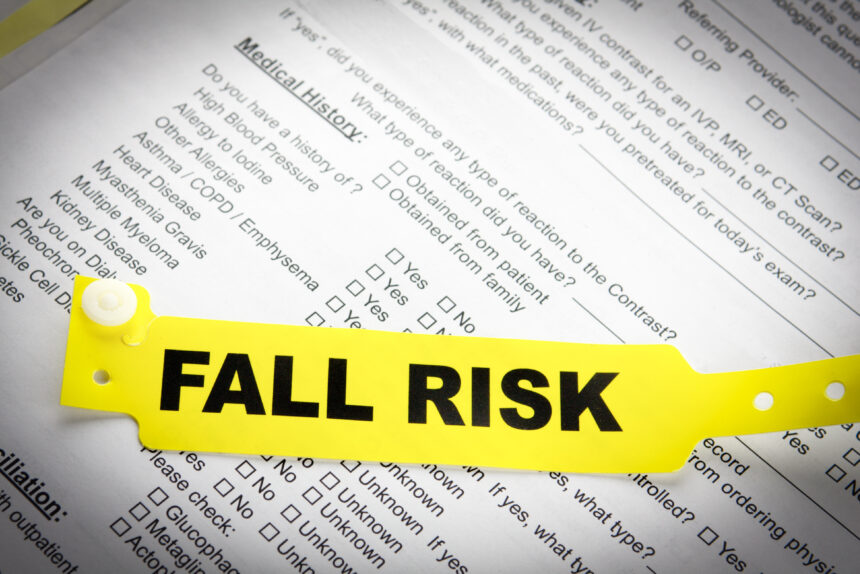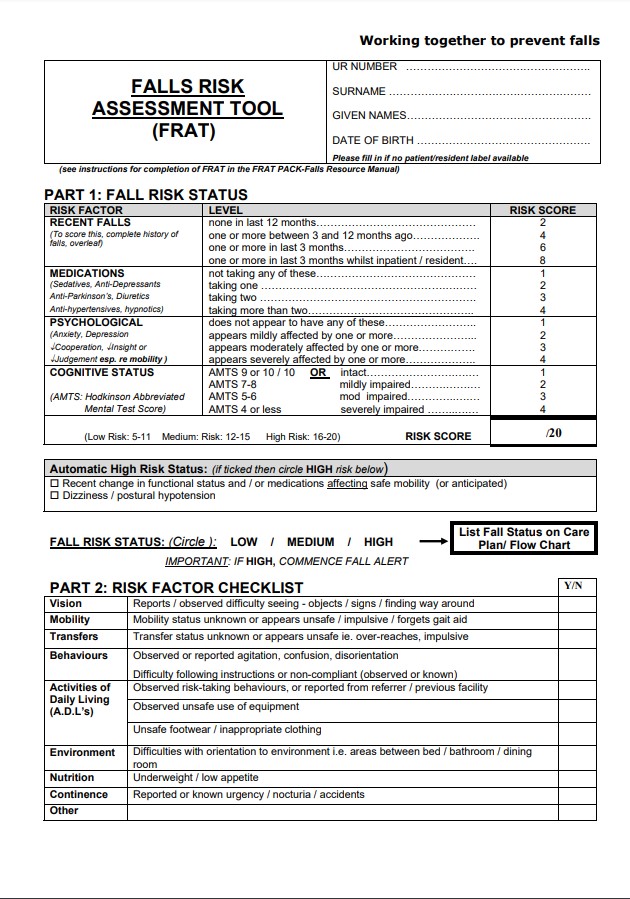Our Dementia Fall Risk Statements
Table of ContentsDementia Fall Risk Fundamentals ExplainedThe Facts About Dementia Fall Risk RevealedHow Dementia Fall Risk can Save You Time, Stress, and Money.9 Easy Facts About Dementia Fall Risk ShownTop Guidelines Of Dementia Fall Risk
In the area, inadequate road lights or unprotected creeks and land fills may also create accidents. Loss Threat Assessment Tool (FRAT) is a 4-item falls-risk screening tool for sub-acute and residential treatment. The FRAT has three sections: fall risk status, threat variable list, and action strategy. A Loss Threat Condition includes data regarding history of recent drops, medicines, emotional and cognitive standing of the client.If the client ratings on a danger element, the matching number of factors are counted to the client's loss risk rating in the box to the far. If an individual's fall threat score completes five or higher, the individual is at high danger for drops. If the individual scores just four factors or reduced, they are still at some risk of falling, and the nurse needs to utilize their best professional evaluation to take care of all loss threat factors as component of an alternative treatment plan.
These basic methods, in basic, assist establish a risk-free environment that decreases unintended falls and delineates core precautionary procedures for all patients. Indications are essential for clients at danger for falls.
Unknown Facts About Dementia Fall Risk
Wristbands must consist of the client's last and first name, date of birth, and NHS number in the UK. Only red color ought to be utilized to signal unique client condition.
Things that are as well far may require the individual to connect or ambulate needlessly and can potentially be a hazard or add to falls. Assists stop the individual from going out of bed with no assistance. Nurses react to fallers' call lights more swiftly than they do to lights launched by non-fallers.
Aesthetic impairment can considerably trigger falls. Maintaining the beds closer to the flooring minimizes the threat of drops and significant injury. Putting the cushion on the flooring dramatically decreases fall danger in some health care settings.
More About Dementia Fall Risk
Individuals that are high and with weak leg muscular tissues who try to remain on the bed from a standing position are most likely to fall onto the bed due to the fact that it's also low for them to reduce themselves securely. If a high person efforts to obtain up from a low bed without support, the person is likely to drop back down onto the bed or miss the bed and drop onto the floor.
They're made to advertise prompt rescue, not to stop drops from bed. Apart from bed alarms, increased guidance for risky clients also might help avoid falls.

Individuals with a shuffling gait increase loss chances drastically. To reduce loss risk, footwear like this ought to be with a little to no heel, slim soles with slip-resistant step, and sustain the ankle joints.
Some Known Details About Dementia Fall Risk
Patients, especially older grownups, have actually minimized aesthetic ability. Illumination a strange setting aids increase presence if the patient need to get up during the night. In a study, homes with appropriate lighting report less falls (Ramulu et al., 2021). Improvement in lights in the house may decrease loss rates in older grownups (Dementia Fall Risk). The use of gait belts by all wellness treatment service providers can promote safety when helping people with transfers from bed to chair.

Caretakers work for assuring a secure, secured, and secure atmosphere. Nevertheless, researches showed extremely low-certainty evidence that caretakers lower autumn threat in acute treatment hospitals and just moderate-certainty that alternatives like video tracking can minimize caretaker usage without increasing loss danger, suggesting that caretakers are not as helpful as originally thought (Greely et al., 2020).
Rumored Buzz on Dementia Fall Risk

Raised physical conditioning lowers the risk for falls and limits injury that that site is endured top article when loss takes place. Land and water-based workout programs might be in a similar way beneficial on equilibrium and gait and consequently minimize the threat for falls. Water workout may contribute a positive advantage on equilibrium and stride for women 65 years and older.
Chair Increase Exercise is a straightforward sit-to-stand workout that helps reinforce the muscles in the upper legs and butts and improves flexibility and freedom. The objective is to do Chair Surge exercises without making use of hands as the client ends up being more powerful. See sources area for a comprehensive instruction on how to carry out Chair Surge workout.